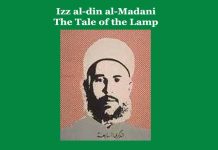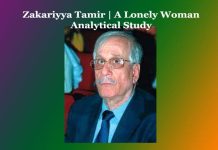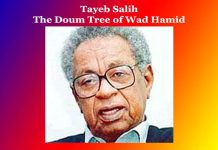Fuad al-Takarli | A Hidden Treasure | An Analytical Study
A Hidden Treasure
Fuad al-Takarli’s Short Story ‘A Hidden Treasure’ — An Analytical Study
‘A Hidden Treasure’ is an Iraqi Arabic short story written by Fuad al-Takarli (1927-2008). The story deals with the themes of the hardship of life and love.
First, the author Fuad al-Takarli of the story ‘A Hidden Treasure’ has shown how a family fell into hardship and coped with it honestly and wisely. The main character named Abdur Rahman belonged to a financially rich family. But when he was sixteen he lost his father and resultantly the family fell into poverty. His father had married two women, the first one being unable to produce children, married another woman who bore four children: three daughters and a son to his father. When his father died the family fell into hardship as the family had to live with the pension of the dead. They lived in a rented house. Once, the house owner treated young Abdur Rahman harshly for not being able to pay the rent of the house. Then he was a student in secondary school. When he told his mother how harshly he was treated by the landlord, his mother embraced him tenderly and said:
“My God forgive him. You’re right, my son, your family is honourable… your family may not have a lot of money… that’s not right, and no one should be expected to bear this. Come on let’s get our act together.”
His mother was illiterate but commonsensical. She did not much regret with what they had lost, instead, she lovingly and naturally focused her attention on what they had, being her daughters and son who was earning an honest living. She said, “Let’s forget everything and celebrate what we have — our health and good looks!”
Then his uncle procured a job for him in an oil refinery and since then the family began to live a better life.
Thus the author of the story brings about how the family overcame the hardship and lived an honourable life.
The second theme of the story ‘A Hidden Treasure’ is the theme of love: the love between Abdur Rahman and Khadija. When Abdur Rahman was a boy of fourteen the family has a neighbour named Ali Asghar. Khadija was his daughter. Her mother often came to their house and helped Rahman’s mother with chores. She often kept her daughter Khadija in their house. Then Abdur Rahman and his three sisters played with Khadija. They often played hide and seek. Once while playing hide and seek Abdur Rahman and Khadija hid at the same spot then they happen to touch each other unknowingly and suddenly they felt a sensation of love for each other. The author gives a vivid description of their relationship in the story in the first person as under:
“We were free as birds that summer holiday. My sisters, Khadija and I fooled around and played in our large house to our heart’s content, with the innocence of childhood. The game we used to play most was hide-and-seek. It was an exciting game full of cunning, and we preferred it to all others. As we played so often, happened once that Khadija and I were hiding in a dark corner behind a pile of bedding in one of the rooms. We were wedged together next to the wall, hunching in fear of being spotted by my youngest sister, when suddenly felt the combined heat of our young bodies. Next, to her, I felt my shoulder brushing up against her heaving bosom. Her shining eyes radiated with delight, framed by the black hair that cascaded around them. I was shaking, subconsciously wanting to move closer to her and put my arms around her. I felt deliciously dizzy and drew her close to my chest; I started pressing myself strongly against her, feeling the curves of her body while she gave herself over to me.”
Their lovemaking ceased here since the family of Khadija left the place and shifted to another place. The years passed by. After some years, already all the three sisters of A. Rahman were married off. When he was employed in the oil refinery, one day he was called on by Dr Ahmed Raghib, the manager of the plant who asked him to repair a machine of his house. The driver of the manager drove him to their house. He very easily repaired the machine and at the time of returning, he met Khadija, his childhood play-maid. She had been married to the manager five years ago. This meeting reminded them of their childhood love affairs. They exchanged glances to each other. Later on, Khadija invited all the members of Abdur Rahman to their house. There they got a warm reception. The author narrates:
After the meeting, I did not know what had happened to my universe. 1 had fallen victim to a constant state of bewilderment, which worried me more than it did my mother. I was certain that nothing new had happened, so what caused my apathy at work and an unusual loss of interest in the machine world around me? Everything was normal and had been in its place since time immemorial, except that this heart of mine was continuously agitated.
She invited all of us, by way of her important husband, to her grand house for dinner – all of us … all of us: my mother, my three sisters with their husbands and children, and I…. ‘All of you . . . all of you should come and visit us.’ Faced with this overwhelming desire, we could not but gratefully accept the invitation.
Our moment of seclusion and kisses, which appeared to me to be engraved on my forehead and in the sky, raced through my mind, conjuring up images of other passionate encounters. I remembered my hunger for her – a special kind of hunger that consumes the mind and body and everything in between. I could not bear to be away from her, except for the briefest of moments, and I did all I could to spend time just with her. It was not always possible, and as soon as she left me, my hunger for her returned with a vengeance, burning my chest and my entire being.”
The story comes to the closing with Abdur Rahman’s following emotional expression:
“The next day I sought refuge in that store of feelings I had proudly told her about, I only found hunger, misunderstanding and hollow echoes, which rang out the name of Khadija.”.
There are three main characters in the story. They are Abdur Rahman, his mother and Khadija. All the characters have got fully portrayed in the story.
Abdur Rahman is portrayed as an honest and responsible son and an emotional lover. He lost his father at the age of sixteen but he did not lose hope in life. He sacrificed his education and took up a job in an oil refinery to earn money for the family. As a government employee, he is very dutiful and earns the good faith of his boss. Later on, he was put in charge of managing the service department at the Doura Oil Plant. Although his salary increased, his ambitions did not change. He lived a modest and honest life. He had the same kind of feelings of contentment that his mother had and he felt comfortable. He was not philosophical about life. Though his niche offered him material possession, he did not force people to pursue him.
Secondly, the author of the story ‘A Hidden Treasure’ portrays him as a lover. He fell in emotional love with a girl of thirteen named Khadija at the age of fourteen, a daughter of Ali Asghar who was a major sergeant in the army. But circumstances caused the family of Ali Asghar to leave the place and with this, their relationship came to an end. Later on, he met Khadija while he was working in an oil refinery. Khadija was married off to the manager of the oil refinery where Abdur Rahman was an employee. Then the memory of their past love affairs revived in their mind. Even Khadija invited the family of Abdur Rahman to their house. It was a very exciting moment for them. He said:
“Our moments of seclusion and kisses, which appeared to me to be engraved on my forehead and in the sky, raced through my mind, conjuring up images of other passionate encounters. I remembered my hunger for her – a special kind of hunger that consumes the mind and body and everything in between. I could not bear to be away from her, except for the briefest of moments, and I did all I could to spend time just with her. It was not always possible, and as soon as she left me, my hunger for her returned with a vengeance, burning my chest and my entire being.”
The second main character is the mother of Abdur Rahman. She was illiterate but commonsensical. She was honest and ideal to maintain the family after the death of her husband. She did not much regret what they had lost after the death of her husband. Instead, she lovingly and naturally focused her attention on what they had then, being her daughters and son who were earning an honest living. She possessed this rare store of contentment and satisfaction. She said to her children, “Let’s forget everything and celebrate what we have –our health and good looks!” She loved her children very much and appreciated their way of honest thinking. She kept praying to God to keep her children in good health.
Thus the author of the story ‘A Hidden Treasure’ has represented her as an ideal mother with natural wisdom.
The third character in the story is Khadija. She was the daughter of Ali Asghar, a major sergeant. Their economic condition was not so good, so her mother often came to the house of Abdur Rahman and helped his mother with chores as they were neighbours. She was a striking-looking girl with black eyes, black hair and a pale white complexion. Her mother used to leave her with them. Abdur Rahman did not know why her mother left Khadija with them. Khadija openly showed her fondness for Abdur Rahman and never refused to do anything and was always eager to please him. On the other hand, Abdur Rahman was at the wild age of fourteen reserved shy and too proud to pay any attention to young girls. Khadija would throw dazzling glances at Abdur Rahman. She took a great interest to get involved with him while they played hide and seek. Once at play, she came closer to the bosom of Abdur Rahman and felt a warm love towards him.
Later on, the family of Khadija happened to shift to a remote place and then their relationship came to an end. After some years she was married off to Dr Ahmed Raghib, the general manager of the refinery laboratories where Abdur Rahman was an employee. One day A. Rahman went to the household of the manager to repair a machine. There he happened to meet with Khadija. Their past memory of loving each other came to their mind. They became emotional. Later on, Khadija invited the family of Abdur Rahman to their house.
Thus the author delineated Khadija in the story as an emotional but honest love maker.
The story ‘A Hidden Treasure’ contains two events. The first one is the narration of the condition of the family of Abdur Rahman after the death of his father. The second one is the details of the love affairs between Abdur Rahman and Khadija. The first part of the story reads like an autobiographical piece of essay where we get an account of how the family of A. Rahman had fallen into hardship after his father’s death. In the second part, we are introduced to the love affairs between A. Rahman and Khadija. The accidental meeting between the two at the house of Dr Raghib makes the climax of the story and the denouement happens slowly with the reminiscence of their past relationship. Hence the construction of the story may be called a logical one.
The setting of the story includes the atmosphere, and description of the household environment of the house of A. Rahman, the manners and style of their living.
The Dialogue used in the story ‘A Hidden Treasure’ is appropriate to the characters and situation. The dialogues, especially the dialogues of Abdur Rahman express the inner motives and feelings which leads the story ahead to an emotional end.
The author of the short story ‘A Hidden Treasure’ has expressed the philosophy of life in the story indirectly as: people who are wise don’t lose their honesty even in times of hardship. Secondly, the feeling of love is innate to human instinct.
The story ‘A Hidden Treasure’ is written in the first person as a piece of autobiography and hence the appeal to the content of the story is increased to its readers.
In representing the story the author has succeeded as the purpose of the motives of the author is maintained throughout the story.
In conclusion, it may be said that Fuad al-Takarli’s short story entitled ‘A Hidden Treasure’ is a fine love story where he has portrayed the theme of love as a natural and instinctive feeling to humans. 0 0 0 A Hidden Treasure
Fuad al-Takarli A Hidden Treasure An Analytical Study
Books of Literary Criticism by M. Menonimus:
- World Short Story Criticism
- World Poetry Criticism
- World Drama Criticism
- World Novel Criticism
- World Essay Criticism
- Indian English Poetry Criticism
- Indian English Poets and Poetry Chief Features
- Emily Dickinson’s Poetry-A Thematic Study
- Walt Whitman’s Poetry-A Thematic Study
- Critical Essays on English Poetry
- Tawfiq al-Hakim’s Novel: Return of the Spirit-An Analytical Study
- Tawfiq al-Hakim’s Novel: ‘Yawmiyyat Naib Fil Arayaf’-An Analytical Study
- Analytical Studies of Some Arabic Short Stories
- A Brief History of Arabic Literature: Pre-Islamic Period (500 AD-622 AD)
- A Brief History of Arabic Literature: Early Islamic Period (622 AD-661 AD)
- Reviews on William Shakespeare’s Works
- Reviews of Charles Dickens’ Works
- Reviews of John Milton’s Literary Works
- Reviews of Some Iconic Travelogues
- Shakespeare’s Sonnets-Critical Studies
- Analytical Studies of Selected Poems of Sarojini Naidu
- Analytical Studies of Selected Poems of Rabindranath Tagore
- Analytical Studies of Selected Indian English Poems
- Reviews of Selected Motivational Books
- Origin Evolution & Functions of Literature
- Essays on Shakespeare and His Time …











